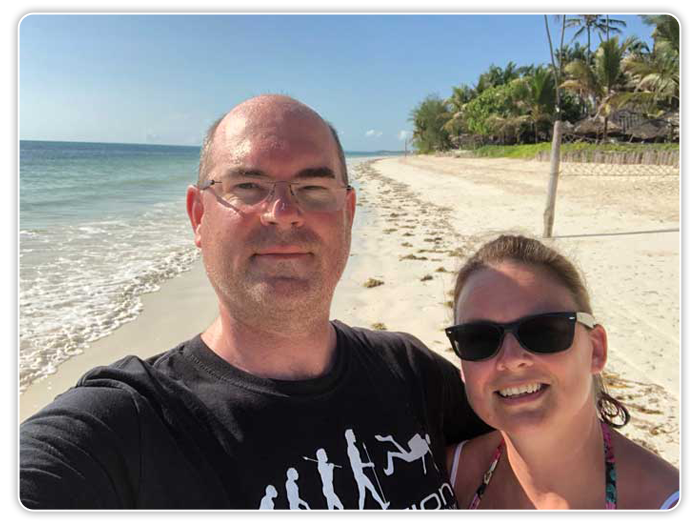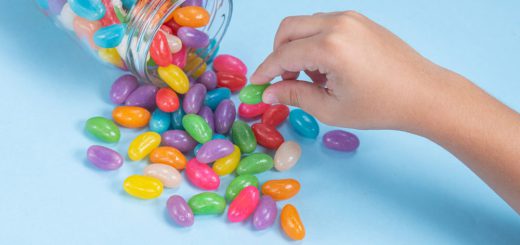Case Study: $0 to $145,000 Giving Away Products
Here’s how one marketer used a simple advertising campaign to grow a massive email list of customers in a short amount of time.
This marketer brought in $145,000 in revenue and grew his list of customers and subscribers to over 20,000 (and counting) using this method.
The key here is the promotion was designed to go viral, creating 37% opt in rates on average and an astonishing 8% sales conversion rate from cold traffic.
That’s right… COLD traffic.
The campaign pays for itself, meaning the people who get the free product pay enough in shipping and handling to cover the costs of the campaign itself as well as the product and shipping.
Some days he actually turns a rather nice profit, depending on a few different factors. But he is never out of pocket to build his list.
And taking a close look at this, I have to think it would work in almost any market, too.
Here’s how it works:
He’s advertising a product for FREE. And who doesn’t love free?
Even better, this is a physical product that he sends in the mail. Everyone loves receiving real items vs virtual, and they also love getting packages in the mail.
He creates a full color ad that advertises a relatively inexpensive product for free. In his case, the product he chose is worth maybe $20 to the end user, but of course in reality he’s paying an incredibly low price for it.
And the customer covers the shipping and handling.
The prospect clicks on the ad and is sent to a page that explains the product, the benefits and the scarcity.
He also provides a reason for why he’s giving it away, which increases sales. If people don’t understand why you’re giving something away, they are less likely to buy because they don’t believe the offer.
Now then, pay close attention to this next part: On the landing page there is NO mention of the cost for shipping and handling for a reason. The reason given to the customer is because to figure out the cost of shipping, the customer has to enter their details first.
But the real reason is to capture the email and mailing addresses of people who don’t end up paying for the shipping and getting the product.
This way you’re not only building a list of buyers, you’re also building a list of people who are interested in the niche but don’t complete the process to get the free product.
This little technique alone will DOUBLE your list size.
Once the prospect has entered their shipping details, they are redirected to a page with shipping options. Shipping is typically in the $7 to $9 range. The prospect enters their credit card info and then continues with their purchase.
After they’ve paid, you’ve got two options: Send them to a thank you page or send them to an upsell for another product or service.
He uses drop shipping rather than fulfilling the orders himself. The orders are sent to a wholesaler – AliExpress in this case – and the product is sent directly to the customers. Products are created and warehoused in China and mailed on your behalf directly to customers so that you never have to deal with products.
And because they come from China, the cost of products is about 10% of what it would be in North America.
You can get some products shipped to your customers for just $1, including the shipping.
As an example, if you’re charging $6.97 for shipping handling, that fee will cover the product, the shipping and the cost of the ad.
This gives you a new buyer for no cost or sometimes even for a profit.
Why is this type of campaign so effective?
Because people like to get free stuff sent to them in the mail, even if they do pay for the shipping and handling.
And because it’s free, people are much more likely to share your offer on social media.
You’re building a list of BUYERS, and as we all know, one buyer is worth several freebie seekers.
And even the second list you’re building – those who filled out the form but didn’t input their credit card number – were interested enough to give you more than just an email address.
Finally, it is far easier to upsell someone who has just made a purchase. If you place an upsell on this funnel that is tightly aligned with the initial offer, I can about guarantee you will do well.
Why do I love this type of campaign?
- You can build a buyers list quickly.
- You’re shipping a real, tangible product and yet you’re stocking no inventory.
- There’s nothing for you to ship, since you’re using a drop shipping service such as AliExpress.
- This type of offer gets shared online and it has the potential to go viral.
- This method can be adapted to almost any market.
- Buyers have already given you their credit card info when you offer the upsell, making far easier to get that next sale.
What are the pitfalls to watch out for?
There are several things to keep in mind…
1: Plan ahead
You need to know in advance what types of products you’re going to be promoting to your new list after this initial sales funnel.
It’s crucial that your initial offer aligns with those products, or your list will not continue to buy.
For example, you can’t give away free cosmetics and then try to sell household cleaners. But you could sell courses on how to do makeup, as well as selling more makeup products.
2: Give a reason why
You’ve got to give the prospect a reason why you’re offering this free product.
People are naturally suspicious of free products and they’ll be reluctant to order unless you give them a reason why you’re only charging shipping and handling.
Your reason could be you’re testing a new product, having an anniversary sale or celebrating your own birthday.
As long as you give some sort of reason, they’ll stop wondering what the catch is and go ahead and order.
3: Include scarcity in your campaign
Maybe you’re only giving away a certain number of products, or you’re only allowing people to get just one or two for themselves, or there is a deadline for how long your promotion lasts.
Be sure to include some sort of scarcity into your message to help them take action right away.
4: Not sold in stores
If possible, always choose products that are not readily available anywhere else. For example, a pretty blue wallet can likely be found elsewhere, but a pretty blue wallet with a particular adorable kitten on it could be a really fast seller because that kitten isn’t found anyplace else.
5: Do not allow AliExpress to enclose receipts
Depending on the drop shipping service you use, you might need to tell them not to include a receipt.
Imagine if you collect $7.95 for shipping the “free” product worth $20, and the customer gets a receipt saying you paid $1 for the product.
Not good.
In the case of AliExpress, simply write, “Please no receipt in box” in the ordering details to prevent this from happening.
6: Choose your products and your sellers wisely
Order and test the products before you give them away. A great product will enhance your reputation while a lousy product will hurt it.
Also see how long it takes to get the product and what the packaging is like.
Use AliExpress’ seller rating system to find sellers that are highly reputable that you can count on.
PRO-TIP: Locate a similar or nearly identical product that is available from another seller, just in case your seller runs out of the item you are giving away.
7: Adjust customer expectations on shipping
Make it clear to everyone who gets the free offer that ship times will take longer due to this being a special promotion.
The fact is, the product is coming from China and shipping times can vary wildly. 2 to 4 weeks is common, but 6 weeks isn’t unheard of, either.
8: Chinese New Year is real
It’s hard for other countries to grasp, but for two to three weeks in February China basically shuts down for Chinese New Year. This can severely impact shipping times, so plan accordingly.
9: Keep selling to the leads that didn’t pay for shipping
If they took the time to fill out their shipping information, there is an excellent chance you can get them to complete the process of paying for shipping by continuing to remind them over the next few days.
Emphasize how much others love the free product as well as the scarcity and you’ll get more sales of the free product as well as a few more upsells, too.
10: Landing page necessities
While the subject of this case study won’t let me show you his exact landing page where he collects the name and address of the person getting the free offer, I can tell you what’s on it.
The title at the top of the page is, “Free _item name_” where you state what you’re giving away.
There are two columns.
The left column, from top to bottom, includes:
A countdown timer that states, “This special offer expires in hours/minutes/seconds.
A picture of the item being giving away.
A bar that shows the item is 87% sold out.
Guarantee symbols to show the item is guaranteed as well as the safety of the customer’s information.
A subheadline that reads, “Free _item name_ give away”
A paragraph detailing the benefits of the product.
A second paragraph detailing the features of the product.
The right column, from top down, includes:
“Shipping” and the fields for the name and address
A blue bar that reads, “Go to Step #2
The credit card symbols (Visa, Master Card, American Express, Discover)
The subheadline, “Testimonials from Facebook”
Several short Facebook testimonials
And that’s it.
The next page, of course, is where the customer enters their credit card information.
This is a simple system you can use in almost any niche to assemble a funnel that can go viral, build you a list of prospects and a list of buyers, and even make you money as you list build.
And of course the real money comes as you continue to send offers to your new lists that are tightly aligned with the initial offer.
What This Guy Stumbled Across By Accident Nearly TWENTY YEARS AGO Is Anything But Average.

It's Still Banking Him $25,000 - $35,000 EVERY SINGLE MONTH!
Privacy Policy: We value your privacy. You can unsubscribe from receiving future emails with 1 click at any time.























